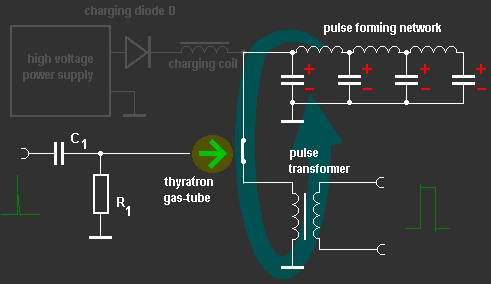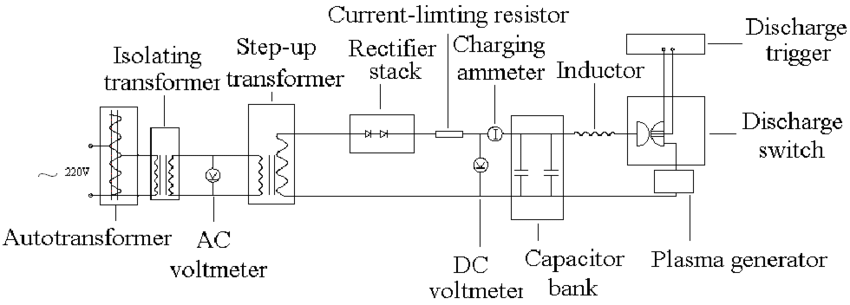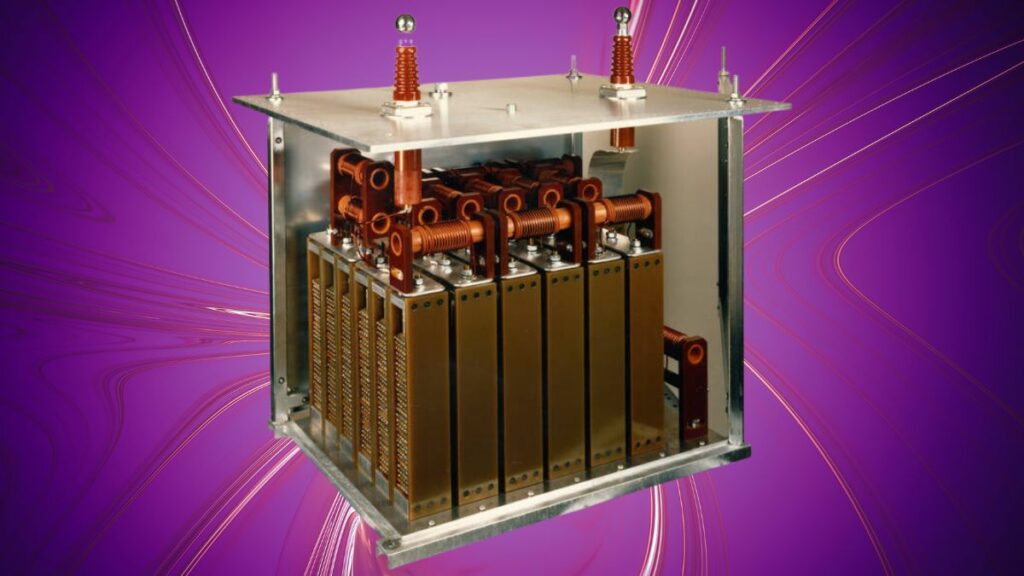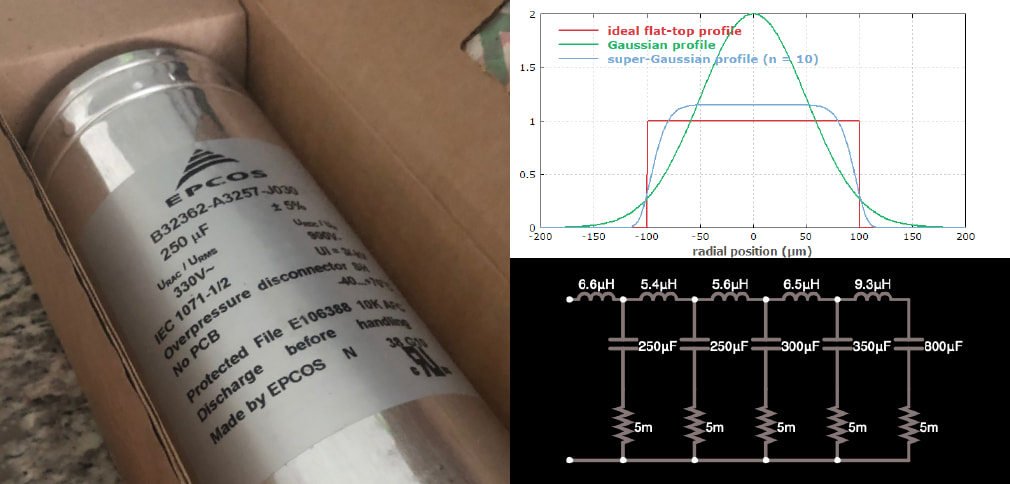Pulse Forming Network – Discover In 2024!

The Pulse Forming Network (PFN) serves as a crucial element for shaping high-voltage pulses with specific characteristics.
Pulse Forming Network is an essential component in the realm of electronics and electrical engineering. A pulse-forming network (PFN) is an electrical circuit that is created to store electrical energy for some time and then release it in a high-energy pulse.
This article delves into the intricacies of PFNs, exploring their components, working principles, applications across various industries, design considerations, as well as their advantages, limitations, and future trends.
Definition Of Pulse Forming Network – Delve Into It!
A Pulse Forming Network (PFN) is a specialized electrical circuit used in various applications to store electrical energy gradually and then release it in a sudden, high-energy burst.

Think of it as a system that gathers electrical power slowly, like filling a reservoir, and then swiftly unleashes it when needed, akin to opening floodgates.
This controlled release of energy is crucial in many fields, from medical devices to radar systems. In simpler terms, it’s like a traffic light for electricity, managing the flow of energy to ensure it goes where it’s supposed to, efficiently and effectively.
Importance Of Pulse Forming Networks – Must Know!
Pulse Forming Networks (PFNs) are integral components in electronics and electrical engineering due to their ability to shape high-voltage pulses with precision. They play a crucial role in various applications where the controlled release of energy is essential.
The significance of PFNs lies in their capability to manage electrical impulses effectively. They ensure that energy is stored and discharged efficiently, contributing to the reliable operation of numerous systems.
In fields such as medical technology, PFNs enable the precise delivery of energy for procedures like MRI scans and laser surgeries, ensuring patient safety and accurate results.
Moreover, PFNs are instrumental in research settings, particularly in particle accelerators, where they provide the essential power surges needed to propel particles to high speeds, unlocking insights into fundamental physics.
Overall, the importance of PFNs lies in their ability to facilitate the controlled release of energy, enabling precise operations in various applications across different industries.
Read Also: Kennedy Funding Lawsuit – Unveiling The Success In 2024!
Components Of A Pulse Forming Network – Take A Look!
To understand how pulse forming networks work their magic, let’s take a peek at their key building blocks.

- Capacitors: Capacitors are like the energy reservoirs of a pulse forming network, storing up electrical energy to be released in a controlled burst when needed.
- Inductors: Inductors are the smooth operators of the pulse forming network, helping regulate the flow of energy and ensuring it moves along at just the right pace.
- Switches: Switches act as the gatekeepers of the pulse forming network, deciding when to unleash the stored energy in a swift and precise manner.
Working Principle Of A Pulse Forming Network – Explore Together!
The working principle of a Pulse Forming Network (PFN) involves two main processes: energy storage and controlled release.
Energy Storage:
Initially, the PFN accumulates electrical energy from a power source, typically over a relatively extended period. This energy is stored in capacitors within the network. Capacitors function as energy reservoirs, gradually storing up electrical charge as voltage increases across them.
Read Also: 45.743.633 Ltda Ecoseg – Consultoria, Gestao E Treinamentos – Everything You Need To Know!
Controlled Release:
When triggered, typically by a switch or triggering mechanism, the stored electrical energy is rapidly released from the capacitors.
This release is coordinated and controlled by the PFN’s design, which includes the arrangement of capacitors, inductors, and switches. The release process involves discharging the stored energy through the load or device connected to the PFN.
Overall, the PFN’s working principle revolves around efficiently storing electrical energy over time and then releasing it in a rapid yet controlled manner to generate high-energy pulses tailored to specific requirements.
Applications Of Pulse Forming Networks – Let’s Know Together!
From cutting-edge medical equipment to sophisticated radar systems, pulse forming networks find their way into a diverse array of applications, powering innovation with their precision.

- Medical Equipment: In the realm of medical technology, pulse forming networks enable the precise delivery of energy for procedures like MRI scans and laser surgeries, ensuring patient safety and accuracy.
- Radar Systems: Radar systems rely on pulse forming networks to generate the high-powered pulses needed to detect objects in the sky or at sea, showcasing their vital role in national security and communications.
- Particle Accelerators: Behind the scenes of cutting-edge research in particle physics, pulse forming networks provide the essential power surges required to propel particles to incredible speeds, unlocking the secrets of the universe.
Read Also: Utah Business Entity Search – A Perfect Guide In 2024!
Design Considerations For Pulse Forming Networks – Discover New Horizons!
Impedance Matching:
When it comes to pulse forming networks, you want to match impedances like a matchmaking pro. Ensuring that the input and output impedance levels are in sync is crucial for maximum power transfer. It’s like finding the perfect dance partner – you want everything to flow smoothly and efficiently.
Pulse Duration Control:
Controlling pulse duration is key to making sure your signals don’t overstay their welcome. Like hosting a party, you want your pulses to arrive, make an impact, and then gracefully exit the scene.
Proper pulse duration control ensures your signals are well-behaved and leave a lasting impression without causing chaos.
Efficiency and Power Handling:
Efficiency and power handling are the dynamic duo of pulse forming networks. Just like Batman and Robin, they work together to ensure smooth operation and optimal performance.
Maximizing efficiency while handling power like a boss ensures your pulse forming network runs like a well-oiled machine, delivering results without breaking a sweat.
Read Also: Txrhlive – Everything You Need To Know In 2024!
Advantages And Limitations Of Pulse Forming Networks – You Should Know!

Advantages of Pulse Forming Networks (PFNs):
- Precise Control: PFNs offer precise control over pulse characteristics, allowing for the generation of high-voltage pulses with specific parameters such as amplitude, duration, and shape. This precision is vital for applications requiring accurately shaped pulses.
- Improved Signal Quality: By shaping electrical pulses effectively, PFNs contribute to improved signal quality in various systems. This enhances the reliability and performance of electronic devices and equipment.
- Versatility: PFNs are versatile components that can be adapted to a wide range of applications across different industries. They can generate pulses for various purposes, including medical equipment, radar systems, and research instruments.
- Enhanced System Performance: By providing efficient energy delivery and precise pulse shaping, PFNs enhance the overall performance of electronic systems. They ensure that energy is delivered efficiently and effectively, contributing to system reliability and functionality.
Read Also: PO Box 9040 Coppell Tx 75019 – Enhance Your Experience In 2024!
Limitations of Pulse Forming Networks:
- Complexity: PFNs can be complex systems, requiring careful design and implementation. Designing PFNs to meet specific requirements often involves intricate calculations and considerations, which can increase the complexity of the overall system.
- Size and Weight: Depending on the application and energy requirements, PFNs can be bulky and heavy. This can limit their suitability for certain applications where space and weight constraints are significant factors.
- Tuning and Maintenance: PFNs may require periodic tuning and maintenance to ensure optimal performance. This can involve adjusting components or parameters within the network, which may be time-consuming and labor-intensive.
- Application Limitations: While PFNs are versatile, they may not be suitable for all applications. Some systems may have specific requirements or limitations that make PFNs less suitable or practical for use.
Future Trends In Pulse Forming Network Technology – Learn And Thrive!
Future trends in Pulse Forming Network (PFN) technology focus on enhancing efficiency, miniaturization, and performance.

Miniaturization and Integration:
The future of PFN technology is geared towards making these systems smaller and more compact while maintaining or even improving their performance.
This trend involves the integration of components and advanced manufacturing techniques to reduce size and weight, making PFNs suitable for a wider range of applications, including portable and wearable devices.
Enhanced Efficiency:
There is a growing emphasis on optimizing energy conversion processes within PFNs to minimize losses and improve overall efficiency.
This includes advancements in capacitor and switch technologies, as well as the development of novel materials and designs to reduce energy dissipation and increase energy storage capabilities.
Advanced Materials and Components:
Future PFNs may leverage advanced materials and components to enhance performance and reliability. This could involve the use of high-performance capacitors, inductors, and switches with improved energy-handling capabilities and reduced parasitic effects.
Read Also: Fastbackroundcheck – Comprehensive Knowledge!
Integration with Smart Systems:
PFNs may be integrated with smart control and monitoring systems to optimize performance and adapt to changing operating conditions in real-time.
This could involve the use of sensors, feedback loops, and predictive algorithms to dynamically adjust PFN parameters for optimal operation.
Applications in Emerging Technologies:
PFNs are expected to play a key role in emerging technologies such as the Internet of Things (IoT), 5G communications, and electric vehicles.
As these technologies continue to evolve, PFNs will be essential for providing the high-voltage pulses required for various functions such as signal processing, wireless communication, and power conversion.
Frequently Asked Questions
1. What are the emerging trends in Pulse Forming Network (PFN) technology?
Emerging trends in PFN technology focus on miniaturization, efficiency optimization, and integration with smart systems for enhanced performance.
2. How do PFNs contribute to the advancement of electric vehicles?
PFNs play a crucial role in electric vehicles by providing high-voltage pulses for power conversion and motor control, enhancing their efficiency and performance.
3. Can PFNs be used in renewable energy systems?
Yes, PFNs can be integrated into renewable energy systems to manage high-voltage pulses for power conversion and grid integration, improving overall system efficiency.
4. What are the challenges in miniaturizing PFNs?
Miniaturizing PFNs requires overcoming challenges related to component size, heat dissipation, and maintaining performance, driving advancements in materials and manufacturing techniques.
5. How do PFNs contribute to the development of 5G networks?
PFNs enable the generation of high-frequency, high-power pulses required for signal processing and transmission in 5G networks, supporting faster and more reliable communication.
Conclusion:
As Pulse Forming Network (PFN) technology advances towards miniaturization, efficiency enhancement, and integration with emerging technologies, it promises to revolutionize various industries, from electric vehicles to renewable energy and telecommunications, driving innovation and improving system performance.
Must Read:



